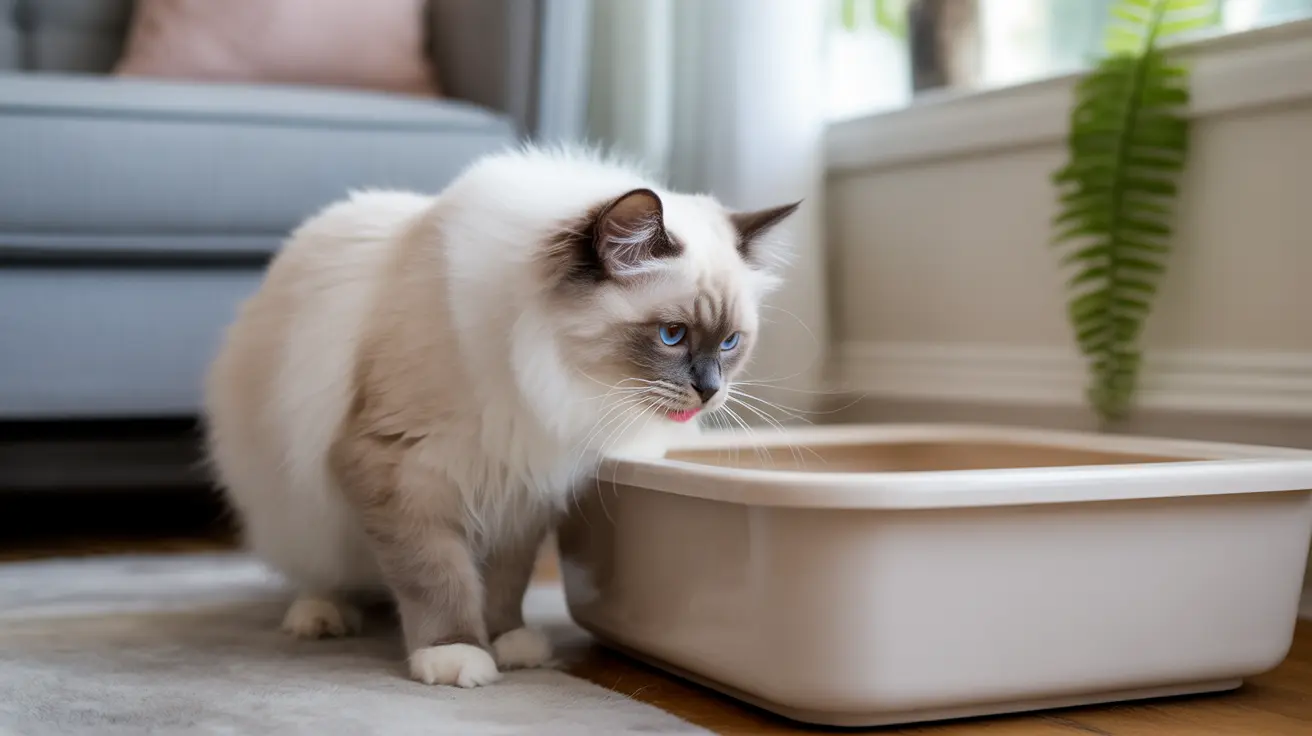When your cat suddenly stops using their litter box, it can be both frustrating and concerning. This behavior change often signals underlying issues that require attention, from medical conditions to environmental stressors. Understanding why your cat has stopped peeing in the litter box is crucial for finding an effective solution and restoring proper bathroom habits.
In this comprehensive guide, we'll explore the various reasons behind this common feline problem and provide actionable steps to resolve it. Whether you're dealing with a medical issue, behavioral challenge, or environmental factor, we'll help you identify the cause and implement the right solutions.
Medical Causes: Your First Priority
When a cat stops using their litter box, medical issues should be your first consideration. Several health conditions can lead to inappropriate urination:
Urinary Tract Problems
Urinary tract infections (UTIs), bladder inflammation, and crystals in the urine can cause pain during urination, leading cats to associate the litter box with discomfort. These conditions require immediate veterinary attention, as they can become serious if left untreated.
Chronic Health Conditions
Diabetes, kidney disease, and thyroid problems can increase urination frequency and urgency, making it difficult for cats to reach the litter box in time. Senior cats are particularly susceptible to these conditions.
Environmental and Behavioral Factors
Litter Box Setup and Maintenance
Many cats avoid their litter box due to cleanliness issues or unsuitable setup. Ensure you're following these essential guidelines:
- Clean the box daily
- Provide one box per cat plus an extra
- Use unscented, clumping litter
- Place boxes in quiet, accessible locations
Stress and Anxiety
Changes in your home environment can trigger litter box avoidance. Common stressors include:
- Moving to a new home
- Adding new pets or family members
- Changes in daily routines
- Loud noises near the litter box
Solutions and Prevention
Immediate Actions
If your cat stops using their litter box, take these steps:
- Schedule a veterinary examination
- Clean affected areas with enzymatic cleaners
- Assess recent environmental changes
- Check litter box cleanliness and setup
Long-term Prevention
Maintain proper litter box habits by:
- Keeping a consistent cleaning schedule
- Monitoring your cat's behavior for early warning signs
- Maintaining a stress-free environment
- Regular veterinary check-ups
Frequently Asked Questions
Why did my cat suddenly stop peeing in the litter box?
Sudden changes in litter box habits often indicate either a medical issue or significant environmental stress. Schedule a veterinary examination to rule out health problems before addressing behavioral causes.
What are the most common medical reasons for a cat peeing outside the litter box?
The most common medical causes include urinary tract infections, bladder inflammation, kidney disease, diabetes, and arthritis that makes accessing the box difficult.
How can I tell if my cat's litter box avoidance is due to a health issue or a behavioral problem?
While only a veterinarian can make a definitive diagnosis, signs of a medical issue include straining to urinate, frequent attempts to urinate, or signs of pain. Behavioral issues often correlate with environmental changes or litter box maintenance problems.
What should I do first if my cat stops using the litter box for urination?
First, schedule a veterinary appointment to rule out medical issues. Meanwhile, ensure the litter box is clean, easily accessible, and located in a quiet area. Clean any soiled areas thoroughly with enzymatic cleaner.
How can I make my litter box more appealing to my cat and prevent future accidents?
Keep the box clean, use unscented litter, provide multiple boxes in quiet locations, and maintain a consistent cleaning schedule. Consider your cat's preferences for litter type and box style, and make any changes gradually.
Conclusion
When your cat stops peeing in the litter box, it's essential to approach the problem systematically, starting with a veterinary check-up and then addressing environmental and behavioral factors. With patience and proper intervention, most litter box issues can be successfully resolved, returning your cat to proper bathroom habits.






